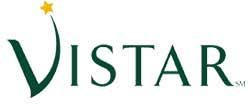
Vistar Packaging Guidelines
Discover Vistar Packaging Guidelines for secure shipping with one-way wood pallets, carton weight limits, barcode rules, and label quality standards.
These answers are generated by our compliance AI and have not been vetted by a human. Take caution if using this information in your packing flows.
Can pallets be stacked?
What are the allowed pallet types for shipping?
What are the max and min weights for shipping cartons?
What are the requirements for carton or pallet labels and their placement?
What are the requirements for inner packs and cases?
What are the requirements for placing labels on cartons being shipped?
Below you will find a common list of FAQs that our users have when it comes to packaging guidelines for Vistar.
Can pallets be stacked?
Pallets cannot be exchanged or stacked using slip sheets. Only one-way wood pallets are allowed. Any other form of pallets will be at the supplier's expense.
What are the allowed pallet types for shipping?
All purchase orders must be shipped into Vistar's facility on standard pallets, one-way wood only.
What are the max and min weights for shipping cartons?
Shipping cartons should not weigh over 50 pounds.
What are the requirements for carton or pallet labels and their placement?
All product shipping into a Vistar Retail Automated facility must contain a unique scannable UPC on master case, inner cartons, and the unit. Barcode requirements include a length of 3.02", a height of 1.25", a ratio of 2:1, and a base line width minimum of 15 mil (.015"). There must be a .25" quiet zone on each side of the barcode. The best placement for the scannable UPC barcode is on the bottom of the inner carton. Smudge proof ink, non-reflective and high-quality label stock paper are required. Ink jet and/or laser printing is not acceptable; thermal printing is required.
What are the requirements for inner packs and cases?
All product shipping into a Vistar Retail Automated facility must have a unique scannable UPC on master case, inner cartons, and on the unit. The barcode should be printed using thermal printing to avoid smudging, and it must be high-quality and smudge-proof. The barcode length should be 3.02", with a height of 1.25", and a ratio of 2:1, with a base line width minimum of 15 mil (.015"). Additionally, there should be a .25" quiet zone on each side of the barcode. Inner cartons that do not meet scanning or conveyable specifications will result in a chargeback.
What are the requirements for placing labels on cartons being shipped?
For cartons being shipped to a Vistar Retail Automated facility, each master case, inner carton, and unit must contain a unique scannable UPC; multiple UPCs will lead to chargebacks. The barcode requirements are as follows:
- Length: 3.02 inches
- Height: 1.25 inches
- Ratio: 2:1
- Baseline width minimum: 15 mil (.015 inches)
- 0.25 inches quiet zone on each side
- Barcode should be placed on the bottom of the inner carton.
Smudge-proof ink on high-quality label stock paper is required for barcode quality. Thermal printing is mandatory, while inkjet and laser printing are not acceptable. Suppliers are responsible for label quality, and flaws like blurry or creased barcodes will result in a chargeback. There's no mention of GS1 or UCC18 labels in the provided pages.
- Length: 3.02 inches
- Height: 1.25 inches
- Ratio: 2:1
- Baseline width minimum: 15 mil (.015 inches)
- 0.25 inches quiet zone on each side
- Barcode should be placed on the bottom of the inner carton.
Smudge-proof ink on high-quality label stock paper is required for barcode quality. Thermal printing is mandatory, while inkjet and laser printing are not acceptable. Suppliers are responsible for label quality, and flaws like blurry or creased barcodes will result in a chargeback. There's no mention of GS1 or UCC18 labels in the provided pages.
QUESTIONS
Don't see the answer you need?
Fill out the form below, and our team will demonstrate how RetailerHub AI provides real-time answers to your questions.

